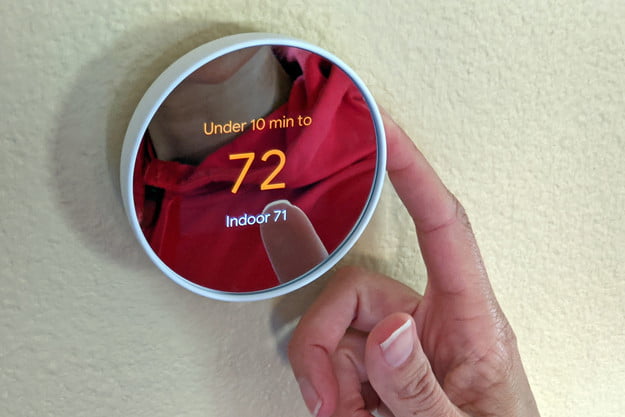When it’s cold outside, the first thing we might think is to crank up our thermostat setting.
However, how much you adjust the thermostat has a direct impact on how much money it will cost you.
In this post, we will answer the question: What temperature should I set my house thermostat during the winter?
Yes, of course, comfort is a major consideration when making this decision, but we at Dave’s want you to know how much money you could save with some minor adjustments and few tips.
The Ideal Temperature for Winter
The argument over the thermostat usually revolves around what temperature is appropriate for a home during the winter.
While there isn’t a single solution, because everyone’s comfort level varies, Energy.gov suggests that 68 degrees is the best thermostat setting for winter.
However, by lowering your thermostat by one degree, you may save up to 1% on your heating costs. So, if you’re okay with a lower house temperature, go ahead and do it!
Dialling down your thermostat by 7-10 degrees Fahrenheit (approximately 5.6 Celsius) can help you save up to 10% on your heating costs each year, according to the United States Department of Energy.
However, regardless of how warm you like it during the day, you should alter the temperature while sleeping or when you are not at home to save money.
That being said, to avoid your appliances and pipes from freezing, it’s best to keep the winter thermostat setting at least at 50-55 degrees.
Imagine waking up on a chilling morning and your faucet is not running because your pipes are frozen. No one wants that!
Temperature for Sleeping
The bedroom temperature should be between 60 and 67 degrees for optimum rest, according to Sleep.org.
Most individuals sleep more comfortably at few degrees below room temperature. This is due to the fact that as the day draws to a close, our body temperature begins to decrease, allowing us to fall asleep quickly.
Temperature for When You Are Away
You may believe that shutting your furnace off entirely while on vacation is a great energy-saving idea but it’s a bit more complicated than that.
You might want to leave your heating system on at a lower temperature, depending on how long you are away for or if you have any pets or plants in your home.
If you’re leaving a houseplant or pet at home, adjust your thermostat to at least 60 degrees Fahrenheit or higher.
Houseplants require an indoor temperature of at least 60 degrees Fahrenheit in order to survive.
Setting the thermostat to at least 64 degrees Fahrenheit for your pets will keep them safe and comfortable while you’re away.
Is Constantly Adjusting the Temperature Bad for My Thermostat?
Some people are under the impression that raising and lowering the temperature consumes more energy, is harder on your heating system, and is more expensive.
However, this isn’t correct.
The fact is that the greater the temperature differential between inside and outside temperatures, the more expensive heating becomes. By lowering the interior temperature even momentarily, you’ll save money. You should lower the temperature as often as possible.
Choosing The Right Thermostat
Any thermostat may be adjusted daily to help you save money, but programmable and “smart” thermostats can automate the process so you can get the most out of your dollars.
Finally, programmable thermostat such as Nest, allow you to create a schedule based on the time of day and day of the week.
The latest generation of “smart” thermostats, on the other hand, goes a step further. They can be programmed, and they may be controlled remotely, with automated functions that can assist you maintain an even temperature throughout the winter.
Some systems, for example, monitor your movement and automatically turn off when you aren’t there. Some of these devices have an adjustable minimal threshold that allows you to maintain a comfortable temperature in your house.I
If your thermostat is old and inefficient, investing in a “smart” thermostat could be a good idea. Not to mention that some utility providers even offer rebates for certain thermostats.
Invest in Multi-Zone Heating System
Although multi-zone heating systems can be more expensive, they give you and your family the most control over the temperature in your house. Multi-zone heating is possible with traditional HVAC systems and newer multi-split, electric HVAC systems.
It allows establish a standard setting for each “zone” or room in your home based on usage, time of day, and other parameters.
There are separate thermostats for each zone so that you may maintain different temperatures according to your home’s unique needs.
For example you might do the following:
- Bedrooms: 68 degrees.
- Living Areas: 72 degrees.
- Raise the thermostat temperature in basements and below ground level.
- Lower the temperature in areas that get lots of sunlight
- Lower temperature in rooms or zones that do not get much use.


























